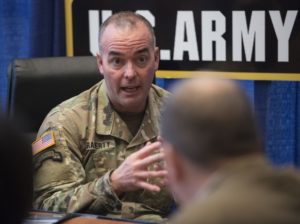
The Army’s top acquisition and technology official confirmed to lawmakers on Tuesday the service has ended a science and technology effort to develop the Strategic Long Range Cannon (SLRC) due to cost and capability redundancy concerns. During a House Armed Services Tactical Air and Land Forces Subcommittee hearing, Rep. Mikie Sherrill (D-N.J.) pressed Army officials on the decision to not include funding in the service’s fiscal year 2023 budget request to further SLRC work, which aimed to develop a system…

 By
By 











